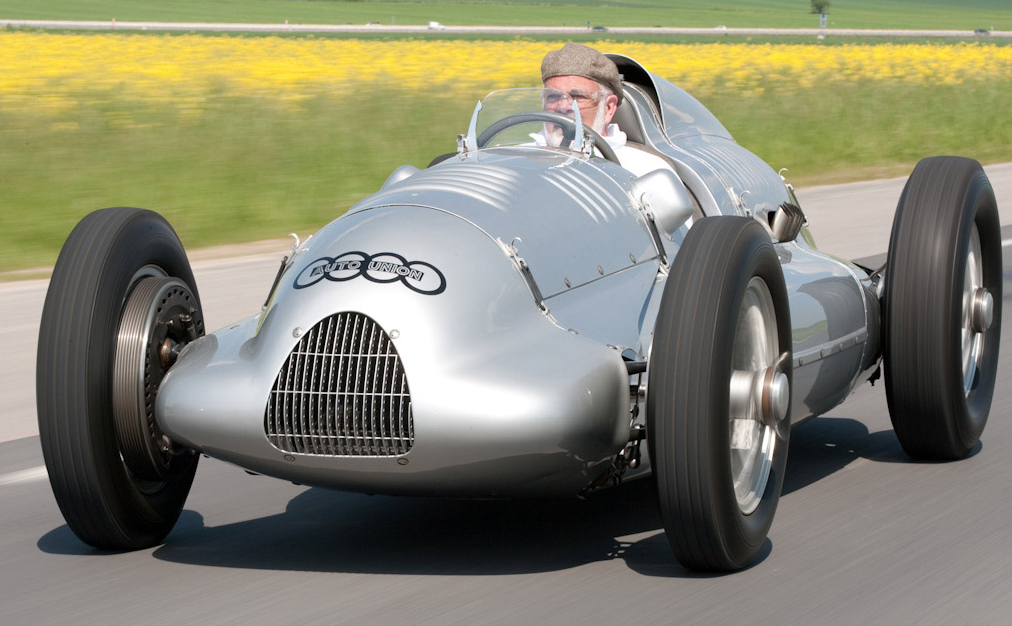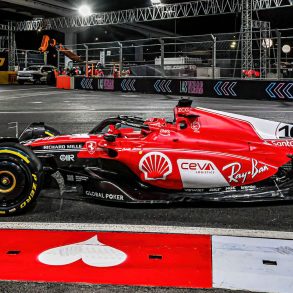Auto Union Type D
Car: Auto Union Type D / Engine: 60 deg V12 / Maker: Auto Union / Bore X Stroke: 65 X 75 mm / Year: 1938 / Capacity: 2,990 cc / Class: Grand Prix / Power: 420 bhp at 7,000 rpm / Wheelbase: 108 inches / Track: 45 inches front and rear / Weight: 1874 lbs

For the new 3 liter formula, Auto Union, like Mercedes chose to use a V12 engine. Built along the same lines of their V16 the engine would later incorporate a two-stage Roots supercharger. The engine could rev at over 10,000 rpm but usually never exceeded 7,000 rpm while racing. The main change in the chassis department saw the replacement of the swing axles with a De Dion rear suspension. The handling of the Auto Union was very much improved but they still trailed Mercedes in shock absorber design. Rather than use hydraulic dampers, Auto Union still relied on rotary friction dampers. Later they would replace their front dampers with hydraulic units while retaining the friction models at the rear. The body was a further refinement of their Type C model and sported horizontal tail-fins at the rear. True to the new formula the Auto Union weighed exactly 850 kg dry and 1220 kg in racing trim including driver. Under Eberan no detail was too small. When wheel covers were deemed necessary for ultra fast circuits he had fenders with Plexiglas windows made so that the drivers could monitor tire wear by watching for the white breaker strip.
Without anyone at Auto Union comparable to Mercedes’ chief engineer, Rudolf Uhlenhaut who could drive his cars at race speeds, Eberan adopted a trucker’s 24-hour tachograph to monitor the cars performance while it was being driven by one of the works drivers. “Isidor” as the drivers dubbed it, was called a cockpit spy. The device, heavily modified by Eberan and an associate by the name of Kienzle, could record revs, speeds, shift points, brake pressures and acceleration/deceleration all on a paper disk. For security the device could not be opened without a key; of which Eberan von Eberhorst had the sole copy!
In 1938 the weak link in the Auto Union pits were the team drivers and early season mishaps forced them to re-sign Hans Stuck who they had unceremoniously fired a short time ago. Stuck promptly continued his mastery of the mountains, winning at La Turbie and at the fearsome Grossglockner which earned him the German Mountain Championship. The regular season started with a stunning upset when Rene Dreyfus won at Pau driving a Delahaye Type 145. While Nuvolari was getting familiar with the rear-engined Auto Union, Mercedes were winning races. Nuvolari would go on to win the Italian Grand Prix as well as at Donington but this was too little and too late and Caracciola became European Champion for the third time. It should also be remembered that Auto Union was operating with a budget a fraction of what was being spent at Mercedes Benz.




















